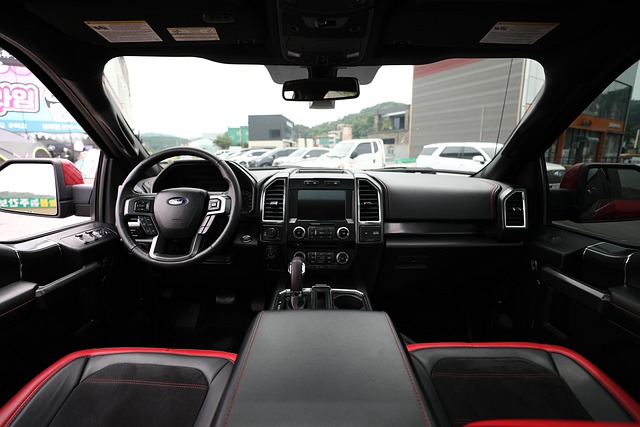Registering a car in California involves understanding specific requirements and gathering essential documents. This step-by-step guide walks you through the process, ensuring a smooth experience. First, comprehend California’s car registration mandates. Next, prepare necessary papers for VIN (Vehicle Identification Number) verification, a crucial step. After passing VIN check, complete the registration application and pay associated fees. By following these steps, including key terms like ‘vin verification’, you’ll efficiently register your vehicle in California.
- Understand California Car Registration Requirements
- Gather Necessary Documents for VIN Verification
- Perform Vehicle Identification Number (VIN) Check
- Complete the Registration Application Process
- Pay California Car Registration Fees
Understand California Car Registration Requirements

Before diving into the registration process, it’s crucial to understand California’s car registration requirements. In this state, registering your vehicle involves more than just filling out paperwork; it necessitates verifying your vehicle’s unique identifier—the Vehicle Identification Number (VIN). This VIN verification is a critical step to ensure that your car meets all safety and environmental standards.
California requires a mobile vin inspection or a vin inspection from an authorized entity to confirm the authenticity of your vehicle’s details. This process verifies that your car isn’t stolen, has met all emission standards, and its registration history is accurate. A reliable mobile vin verifier can streamline this procedure, making it easier for you to navigate the registration process smoothly and efficiently.
Gather Necessary Documents for VIN Verification

To register your car in California, you’ll need to go through a process called VIN (Vehicle Identification Number) verification. Before heading to the DMV, ensure you gather all essential documents related to your vehicle’s history and ownership. This includes the title, registration certificates from previous states (if applicable), proof of insurance, and the most crucial document—the Vehicle Information Packet (VIP). The VIP contains detailed information about your car, including its make, model, year, and unique VIN number.
Additionally, many California drivers opt for a convenient solution by utilizing mobile vin verification services. These companies offer on-demand, in-person inspections using specialized tools to capture and verify the VIN data accurately. A mobile vin inspection ensures a swift and efficient process, allowing you to complete your car registration without the hassle of waiting at traditional inspection stations.
Perform Vehicle Identification Number (VIN) Check

Before registering your car in California, it’s crucial to perform a Vehicle Identification Number (VIN) check. This step is essential for ensuring that the vehicle you’re about to register is legitimate and has not been reported stolen or has any outstanding issues. You can complete this process by using a mobile vin verifier or scheduling a vin inspection with a trusted service. These methods allow you to verify crucial information about your car’s history, including its mileage, previous owners, and maintenance records.
A mobile vin verification is a convenient option where a professional will come to your location to perform the check using specialized equipment. Alternatively, many California Department of Motor Vehicles (DMV) offices offer services for conducting VIN inspections. This process typically involves scanning the VIN from your vehicle’s registration document or the car itself and cross-referencing it with state databases to ensure everything is in order. By completing this step, you’ll be one step closer to legally registering your car in California.
Complete the Registration Application Process

After gathering all necessary documents, it’s time to complete the registration application process with the DMV. Fill out Form DV140, which is the Application for Title and Registration, providing accurate and up-to-date information about your vehicle. One crucial step in this process involves conducting a vin verification, ensuring the Vehicle Identification Number (VIN) on your car matches the details in the DMV’s system. Accurate VIN data is essential for proper registration and ownership documentation.
You can streamline this process with modern solutions like using a mobile vin verifier or scheduling a mobile vin inspection. These services allow you to verify your vehicle’s VIN digitally, saving time and effort while ensuring accuracy. Once your application is complete and the VIN is verified, the DMV will process your registration request, issuing a registration certificate and license plates for your newly registered California vehicle.
Pay California Car Registration Fees

After completing the registration process, the next step is to pay the California car registration fees. These fees cover various costs associated with maintaining vehicle records and funding road infrastructure. The amount you’ll need to pay depends on several factors such as the type of vehicle, its weight, and emissions standards. It’s crucial to ensure that all required documentation, including proof of insurance and any applicable emissions test results (like a smog check), are in order before attempting a California car registration.
One convenient option is to utilize a mobile vin inspection or hire a vin inspector to verify your vehicle’s identity through its unique VIN (Vehicle Identification Number). This process streamlines the registration by providing accurate, official information directly to the California Department of Motor Vehicles (DMV), potentially saving time and effort compared to traditional methods.
Registering a car in California involves understanding specific requirements and navigating several steps. By ensuring you have all necessary documents for VIN verification, completing the registration application accurately, and paying the associated fees, you’ll be well on your way to legalizing your vehicle. Remember, proper registration is crucial for road safety and ownership protection, so take the time to delve into each process carefully.
